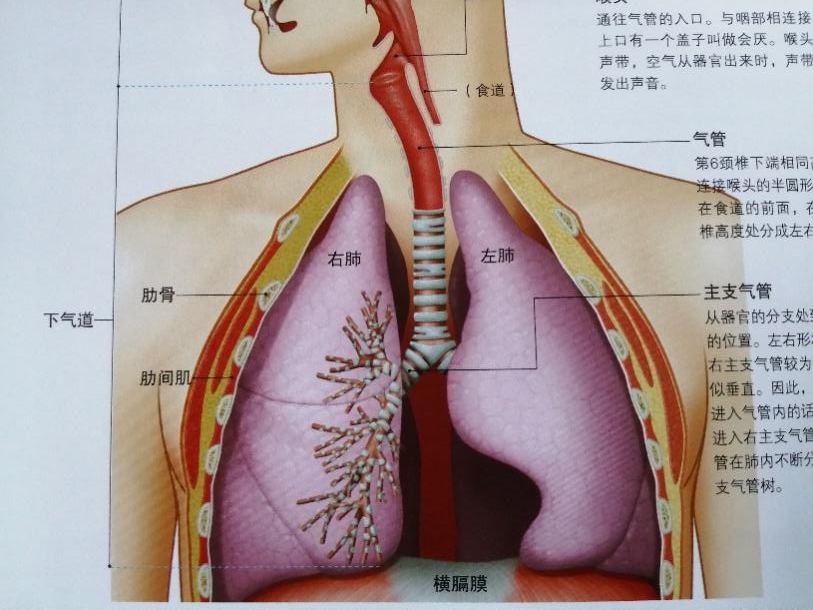
当前课程知识点:Finite Element Method (FEM) Analysis and Applications > 12、Introduction to the application of finite element analysis (1) > 12.3 Finite element analysis for elastic-plastic problems: basic principle > Video 12.3
返回《Finite Element Method (FEM) Analysis and Applications》慕课在线视频课程列表
返回《Finite Element Method (FEM) Analysis and Applications》慕课在线视频列表
弹塑性问题是指变形力学行为
呈现出超出弹性极限以后的塑性行为
这是我们由单拉实验可以得到
当超出弹性极限以后,它呈现出塑性行为
实际上在大多数情况下
进行结构设计的时候一般都是以
材料的弹性极限作为依据
当然还要考虑一定的安全系数
也就是说处于工作状态中的材料应该处于弹性范围
但是由于结构是非常复杂的
特别是有些结构由于有减重孔、工艺孔等原因
一定会产生一些局部的应力集中
这些区域的材料一般都会进入塑性
因此,要考虑弹塑性问题
另外还有一个方面,也要对材料的一些极限行为
比如材料进入塑性以后进行分析
以了解极端承载能力,并进行极限设计
使得结构的设计更合理、更安全
这种情况我们叫极限设计,也要考虑弹塑性问题
弹塑性问题的物理方程是一个关键
我们看看这个单拉实验
这个单拉实验首先是弹性
然后进入屈服极限以后就屈服了
那涉及到一个初始屈服的问题,就是屈服的条件是什么
材料屈服以后,它怎么变化,应变怎么增加
涉及到一个流动的问题
我们把这个称为流动法则
当进行卸载,然后再加载
这个时候新的屈服点比原来的屈服点更高了
我们把这种叫作强化
这种后续的屈服点强化的规律,我们叫强化准则
因此,我们把材料进入塑性以后的三个方面的准则
屈服准则、流动法则、强化准则要进行具体的塑性描述
同时要用单拉的结果
也就是说关于σx一维的情况
怎么来描述复杂应力状态σij的情况
首先看一下屈服准则
大量的实验表明
大多数材料的屈服条件与静水压力无关的
所以我们来分析一下一点的应力状态
这是σij,一点的应力状态
我们把它变换到主坐标上
也就是说在σ1,σ2,σ3这些面上是没有剪应力的
然后在这些主坐标的这些面上
我们分别做8个象限的等倾的面
由这8个等倾面组成的八面体我们称为等倾八面体
在等倾八面体的这些面上有一些特点
也就是说它的正应力就是静水压力
我们叫σ8,它就等于
在这个面上的剪应力,我们叫τ8
刚才说到了,由于屈服条件与静水压力无关
所以说这个面的特征是σ8,它是静水压力
因此,它的τ8很可能就是
决定材料是否产生屈服的屈服条件
我们把这个τ8表达出来就是
如果τ8作为屈服准则是可以的话
我们就可以写成τ8等于一个临界的屈服的剪应力τyd
我们再把τ8=τyd的屈服准则用到1D的单拉情况
1D单拉情况我们都知道,相当于拉伸到一个极限
它就屈服了
那就是σ1=σyd
这个σyd就是一个单拉的屈服极限
由于单拉时,σ2=0,σ3=0
我们代到基于τ8表达的屈服准则里面去
最后我们就可以得到基于单拉情况下的屈服应力的表达
我们可以看出来,这个时候的τyd
也就是说剪切的屈服的临界值等于
这样我们就把τ8的屈服准则里面的τyd作一个置换
把它换成单拉情况下的σyd
换了过后,我们就可以写出这么一个表达
我们把这个条件叫作初始屈服条件
它可以写成一般的函数关系
我们进一步可以定义屈服面的函数
关于塑性流动法则
它是确定塑性应变分量在塑性变化时的大小和方向
我们首先定义一个塑性势函数Q
这个Q如果取为屈服函数F
它就叫关联的塑性流动
如果不相等,我们叫非关联的塑性流动
大多情况下我们都是关联的塑性流动
就是取为屈服函数F
相应的分量就是沿着一个势函数进行法线增长,也就是说
前面要乘上一个塑性增长的乘子
我们分析几种塑性屈服以后的行为
第一种是屈服函数等于0,就是屈服了
这种情况就是继续塑性加载
第二种情况是F=0,屈服了,但是
这个时候是弹性卸载
第三种情况,屈服了,也就是F=0,但是
这又分两种情况
一种是理想弹塑性材料,它是塑性加载
对于硬化材料,它是中性的变载
强化准则它是描述屈服面如何改变
并且确定新的屈服面状态的描述方式
它分等向强化、随动强化和混合强化
在发生塑性强化的时候,材料的临界屈服应力
将随着塑性应变的积累而发生变化
我们把这种情况叫强化,也就是
这个κ是塑性功
它是应力和塑性应变增量的累积量
α是屈服面平移量,也叫作背应力
它是关于塑性应变增量的积分
当然前面要乘上一个因子c
有这么几种典型的强化方式
一个叫双线性随动强化
多线性随动强化
双线性等向强化
多线性等向强化
非等向强化以及Drucker-Prager模型
我们再考查一下,当后续的屈服点卸载以后产生的屈服点
两者之间的应力等于两倍的初始屈服应力
我们把这种情况称为Bauschinger效应
弹塑性问题的有限元分析原理也是分两种情况
一个是基于全量理论的有限元分析的这么一个表达
它是假定整个加载过程为比例加载
其结果只与状态有关,与加载过程无关
全量形式的本构关系我们可以把它写成
当然这个Dep就是弹塑性矩阵
它是和应变相关的
所以整个本构关系是一个非线性的关系
相应的我们可以得到有限元的列式就是
ΔPi是第i步的外载步长
Δqi是第i步的节点位移步长
Kep它是q的这么一个函数关系
这个函数关系表现在
这个D矩阵,也就是弹塑性的D矩阵
它是和节点位移,和应变状态是相关的
所以说这个K矩阵不是一个定常矩阵,为位移q的函数
第二种是基于增量理论的有限元分析列式
增量理论是要考虑真实的加载过程
也就是说变形结果与加载历史是有关的
增量形式的本构关系可以写成
这个Dep是和应力、应变状态有关的
对于所施加的外载增量
也就是说体积力Δb,外力Δp
我们分两步进行计算
第一步是进行初始计算
已有应力状态
它是处于平衡的
外载增量的虚功方程我们就可以写成下面的这个关系
同样,基于节点位移和应变的描述
我们进行N矩阵插值,以及几何矩阵插值
这样我们把位移的增量和应变的增量
表达成节点位移的增量
代到前面的虚功方程里面去
我们就可以得到有限元的方程
这个方程的K同样也是
这个地方的D矩阵是弹塑性的D矩阵
它是和这一点的位移状态是有关的
第二步,我们要进行应力平衡的校正计算
也就是说是在已施加外载步的前提下进行迭代计算
这个时候是没有外载增量,但是状态里面有一个τ
这个τ是在原来增量步的基础上有一个Δt的变化
在这个里面要进行一系列的迭代使得
它里面所施加的外力和内力之间要达到一个平衡
那么我们构建的相应的虚功方程是这样的
那么这个D要进行迭代调整
它是(t+τ)时刻的弹塑性矩阵
这样我们就得到有限元的列式,就是
注意,这个时候的K矩阵是和q矩阵相关的
这个q是在τ时刻进行调整的时候,它的位移的变化
这个时候Δp也是τ时刻的相关的变化
也就是说在这里面有一个内力和外力之间的一个平衡
当这两个达到平衡,也就是说ΔPτ要等于0
这个迭代就停止
这个时候就把每一次迭代的结果,把Δq求出来
-Finite element, infinite capabilities
--Video
-1.1 Classification of mechanics:particle、rigid body、deformed body mechanics
--1.1 Test
-1.2 Main points for deformed body mechanics
--1.2 Test
-1.3 Methods to solve differential equation solving method
--1.3 Test
-1.4 Function approximation
--1.4 Test
-1.5 Function approximation defined on complex domains
--1.5 Test
-1.6 The core of finite element: subdomain function approximation for complex domains
--1.6 Test
-1.7 History and software of FEM development
--1.7 Test
-Discussion
-Homework
-2.1 Principles of mechanic analysis of springs
--2.1 Test
-2.2 Comparison between spring element and bar element
--2.2 Test
-2.3 Coordinate transformation of bar element
--2.3 Test
-2.4 An example of a four-bar structure
--2.4 Test
-2.5 ANSYS case analysis of four-bar structure
--ANSYS
-Discussion
-3.1 Mechanical description and basic assumptions for deformed body
--3.1 Test
-3.2 Index notation
--3.2 Test
-3.3 Thoughts on three major variables and three major equations
--3.3 Test
-3.4 Test
-3.4 Construction of equilibrium Equation of Plane Problem
-3.5 Test
-3.5 Construction of strain-displacement relations for plane problems
-3.6 Test
-3.6 Construction of constitutive relations for plane problems
-3.7 Test
-3.7 Two kinds of boundary conditions
- Discussion
-- Discussion
-4.1 Test
-4.1 Discussion of several special cases
-4.2 Test
-4.2 A complete solution of a simple bar under uniaxial tension based on elastic mechanics
-4.3 Test
-4.3 The description and solution of plane beam under pure bending
-4.4 Test
-4.4 Complete description of 3D elastic problem
-4.5 Test
-4.5 Description and understanding of tensor
-Discussion
-5.1 Test
-5.1Main method classification and trial function method for solving deformed body mechanics equation
-5.2 Test
-5.2 Trial function method for solving pure bending beam: residual value method
-5.3 Test
-5.3How to reduce the order of the derivative of trial function
-5.4 Test
-5.4 The principle of virtual work for solving plane bending beam
-5.5 Test
-5.5 The variational basis of the principle of minimum potential energy for solving the plane bending
-5.6 Test
-5.6 The general energy principle of elastic problem
-Discussion
-6.1Test
-6.1 Classic method and finite element method based on trial function
-6.2 Test
-6.2 Natural discretization and approximated discretization in finite element method
-6.3 Test
-6.3 Basic steps in the finite element method
-6.4 Test
-6.4 Comparison of classic method and finite element method
-Discussion
-7.1 Test
-7.1 Construction and MATLAB programming of bar element in local coordinate system
-7.2 Test
-7.2 Construction and MATLAB programming of plane pure bending beam element in local coordinate syste
-7.3 Construction of three-dimensional beam element in local coordinate system
-7.4 Test
-7.4 Beam element coordinate transformation
-7.5 Test
-7.5 Treatment of distributed force
-7.6 Case Analysis and MATLAB programming of portal frame structure
-7.7 ANSYS case analysis of portal frame structure
-8.1 Test
-8.1 Two-dimensional 3-node triangular element and MATLAB programming
-8.2 Test
-8.2 Two-dimensional 4-node rectangular element and MATLAB programming
-8.3 Test
-8.3 Axisymmetric element
-8.4 Test
-8.4 Treatment of distributed force
-8.5 MATLAB programming of 2D plane rectangular thin plate
-8.6 Finite element GUI operation and command flow of a plane rectangular thin plate on ANSYS softwar
-Discussion
-9.1 Three-dimensional 4-node tetrahedral element and MATLAB programming
-9.2 Three-dimensional 8-node hexahedral element and MATLAB programming
-9.3 Principle of the isoparametric element
-9.4Test
-9.4Numerical integration
-9.5 MATLAB programming for typical 2D problems
-9.6 ANSYS analysis case of typical 3Dl problem
-Discussion
-10.1Test
-10.1Node number and storage bandwidth
-10.2Test
-10.2 Properties of shape function matrix and stiffness matrix
-10.3Test
-10.3 Treatment of boundary conditions and calculation of reaction forces
-10.4Test
-10.4 Requirements for construction and convergence of displacement function
-10.5Test
-10.5C0 element and C1 element
-10.6 Test
-10.6 Patch test of element
-10.7 Test
-10.7 Accuracy and property of numerical solutions of finite element analysis
-10.8Test
-10.8 Error and average processing of element stress calculation result
-10.9 Test
-10.9 Error control and the accuracy improving method of h method and p method
-Discussion
-11.1 Test
-11.1 1D high-order element
-11.2 Test
-11.2 2D high-order element
-11.3 Test
-11.3 3D high-order element
-11.4 Test
-11.4 Bending plate element based on thin plate theory
-11.5 Test
-11.5 Sub-structure and super-element
-12.1Test
-12.1 Finite element analysis for structural vibration: basic principle
-12.2 Test
-12.2 Case of finite element analysis for structural vibration
-12.3 Test
-12.3 Finite element analysis for elastic-plastic problems: basic principle
-12.4 Test
-12.4 Finite element analysis for elastic-plastic problems: solving non-linear equations
-Discussion
-13.1 Test
-13.1 Finite element analysis for heat transfer: basic principle
-13.2 Test
-13.2 Case of finite element analysis for heat transfer
-13.3 Test
-13.3 Finite element analysis for thermal stress problems: basic principle
-13.4 Test
-13.4 Finite element analysis for thermal stress problems: solving non-linear equation
-Discussion
-2D problem: finite element analysis of a 2D perforated plate
-3D problem: meshing control of a flower-shaped chuck
-Modal analysis of vibration: Modal analysis of a cable-stayed bridge
-Elastic-plastic analysis: elastic-plastic analysis of a thick-walled cylinder under internal pressur
-Heat transfer analysis: transient problem of temperature field during steel cylinder cooling process
-Thermal stress analysis: temperature and assembly stress analysis of truss structure
-Probability of structure: Probabilistic design analysis of large hydraulic press frame
-Modeling and application of methods: Modeling and analysis of p-type elements for plane problem



